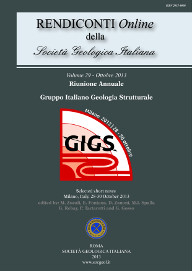
Coupling/decoupling at oblique subduction zones: the sediment effect
Cristina Malatesta (a), Taras Gerya (b), Laura Crispini (a), Marco Scambelluri (a), Laura Federico (a) & Giovanni Capponi (a)
(a) DISTAV, University of Genoa, Corso Europa, 26, 16132, Genoa, Italy. E-mail: cristina.malatesta@unige.it
(b) Institute of Geophysics, Swiss Federal Institute of Technology (ETH-Zurich), Sonneggstrasse, 5, 8092, Zürich, Switzerland
Volume: 29/2013
Pages: 90-92
Abstract
Upper plate at subduction zones can show different styles of deformation according to the coupling/decoupling relationship with the downgoing slab. Plate coupling is influenced by several parameters (i.e. age of the subducting plate, convergence rate, etc.). Using 3D numerical models we observed that at particular geodynamic settings, as could be oblique subduction zones, one of the main parameters controlling coupling/decoupling between the upper and lower plates is sediment amount at trench. According to the variable amount of sediment and therefore to the different force interaction between plates along a single margin, the overriding plate could both subduct coherently, be fragmented in the serpentinite channel or escape subduction and be decoupled from the subducting slab.
Keywords
Get Full Text